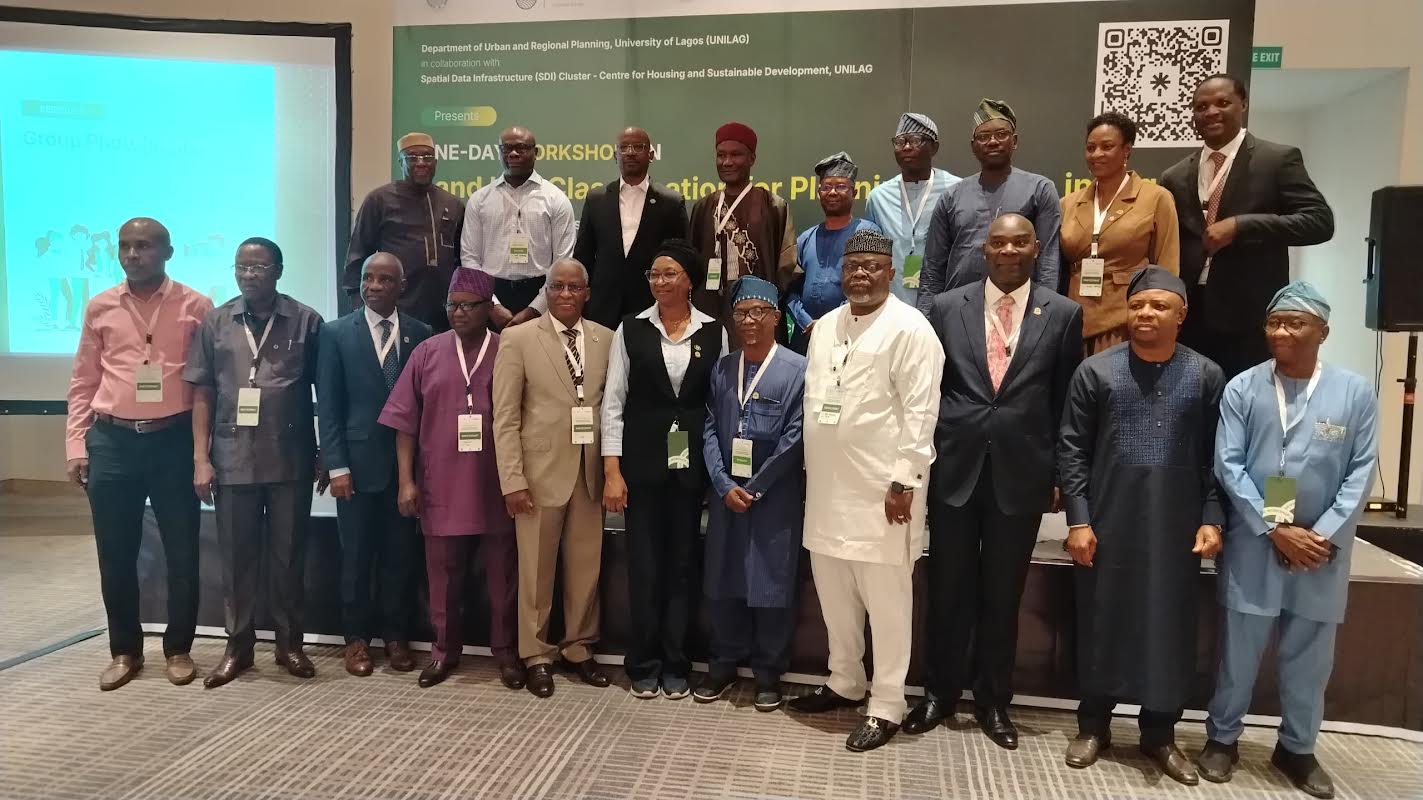Lagos is facing a deepening housing crisis, with the deficit soaring to 3.4 million units from 2.95 million over the past decade, underscoring the widening gap between population growth and housing supply in Nigeria’s commercial capital.
Despite a steady boom in real estate investment and upscale development, more than 70 per cent of residents remain renters, many of them spending a disproportionate share of their income on shelter in a city where affordable housing has become increasingly elusive.
The latest figures, revealed in the newly launched State of Lagos Housing Market Report (Vol. 3) by the Roland Igbinoba Real Foundation for Housing and Urban Development (RIRFHUD), paint a sobering picture of a megacity whose real estate boom has failed to trickle down to low- and middle-income households.
As high-rise luxury apartments continue to redefine the skyline in Lekki and Victoria Island, millions of Lagosians are still locked out of homeownership, trapped in a volatile rental market and sprawling informal settlements. This rent burden is highest in areas like Lekki, Ikoyi, and Victoria Island, where luxury apartment prices continue to rise despite broader economic challenges.
The recently unveiled report is based on field surveys, property analytics, and satellite data, making it one of the most comprehensive independent studies of the Lagos real estate landscape to date. It builds on earlier editions from 2009 and 2016 and is expected to shape future investment and policy direction in the sector.
The report noted that while luxury real estate and short-let apartments are booming, driven by diaspora investment and developers targeting high-net-worth clients, the low-income housing segment remains underfunded and underserved. Notably, there is a growing mismatch between private sector supply and actual urban demand.
In the report, Ikorodu, Badagry, and Alimosho were identified as areas with the highest housing demand but minimal new supply; real estate prices rose by 12 per cent year-on-year, despite rising construction costs and economic volatility and short-let rentals and serviced apartments saw a 15–18 per cent increase in yields in highbrow areas, but vacancy rates are rising in mainland zones due to affordability concerns. Also, infrastructure gaps, particularly in drainage, road access, and electricity, continue to dampen the viability of many residential zones.
It warns of deepening informal settlements and unregulated developments, urging stronger partnerships between government and the private sector to deliver inclusive housing. It called for targeted incentives, including land reforms, tax breaks, and mortgage support for developers building affordable homes.
Within the period under review, the Lagos housing market continued to evolve within a highly complex and dynamic environment, shaped by macroeconomic volatility, shifting housing demand, escalating construction costs, and a widening gap between luxury and affordable housing delivery. Stakeholders underscored a deepening mismatch between housing supply and actual demand.
Many developers observed that new developments are skewed toward high-end properties, predominantly three to five-bedroom homes in elite areas, even though a large majority of Lagosians cannot afford such units. As one respondent put it, “The market is saturated with high-end apartments, but the middle-class can’t keep up.”
This sentiment was echoed by others who highlighted that the proliferation of luxury units does not align with the income profiles of most potential homebuyers.
Another major theme emerging from the interviews was the continued difficulty in navigating Lagos’ regulatory and administrative landscape. Developers reported that land titling and documentation processes remain inefficient and costly, adding as much as 15 to 20 per cent to overall housing costs.
These administrative bottlenecks, combined with delays in securing development permits, are discouraging new investment and slowing the pace of residential construction. Furthermore, the persistent infrastructure deficit, especially inadequate road access and poor drainage, was flagged as a significant barrier to expanding housing developments into less saturated peri-urban areas.
From a demand perspective, the housing market in Lagos remains highly pressured. The city continues to experience rapid urbanisation, with an estimated 600,000 new residents arriving each year.
The population growth is driving sustained demand for both rental and ownership options, particularly among youth and young professionals. However, much of this demand remains unmet due to affordability constraints.
A significant portion of Lagosians earn below N100,000 monthly, making it difficult for them to access formal housing, especially as less than 5 per cent of new units are priced below N15 million. Rental demand is strong, particularly among individuals under 35, many of whom face job insecurity and limited credit access. Interestingly, there is also a growing appetite for micro-units and co-living models, although the supply of such housing remains limited.
At the upper end of the market, the luxury residential segment continues to attract investor attention, particularly in areas such as Ikoyi, Banana Island, Victoria Island, and Eko Atlantic. These locations dominate Lagos’ high-end property landscape, with price indices in 2024 showing annual appreciation rates ranging from 20 to 60 per cent.
Notably, six-bedroom homes in Banana Island and Eko Atlantic surged to index values exceeding 700 by the fourth quarter of 2024, underscoring strong investor interest, particularly from high-net-worth individuals and diaspora buyers. However, despite these high valuations, transaction volumes in some parts of the luxury segment have begun to plateau. Foreign exchange instability, limited mortgage availability, and investor fatigue are emerging as constraints, particularly in the four-bedroom and five-bedroom brackets.
A defining feature of the luxury market is the growing trend of short-let and Airbnb conversions. Developers and investors are increasingly turning to these models to maximise rental yields, particularly in areas with strong tourism and business travel demand. While this strategy enhances short-term profitability, it is contributing to a market shift away from owner-occupancy and long-term residential use, exacerbating housing scarcity for permanent residents.
The cost of building materials has been a major contributor to rising house prices and declining affordability. Nigeria remains heavily dependent on imports for a wide range of construction inputs, including sanitary fittings, tiles, windows, reinforced steel, and roofing components. The devaluation of the naira, combined with increased port tariffs and logistics bottlenecks, has driven material prices sharply upward
The Lagos State governor, Babajide Sanwo-Olu, who unveiled the report, said since its inception in 2009, the report has served as an evidence-based compass for housing stakeholders. “That it continues to be produced as a Corporate Social Responsibility initiative is a reflection of RIRFHUD’s long-standing commitment to supporting Lagos State’s vision for inclusive and efficient urban growth.”
Sanwo-Olu, represented by Mr Sam Egube, said the state has advanced several critical reforms, from digitising land administration through the Electronic Geographic Information System (e-GIS) to expanding mass transit networks to complement new housing developments. “The integration of initiatives like the Blue and Red Line Rail, BRT corridors, and Rail Side Estates demonstrates our focus on transit-oriented development that links housing to opportunity.”
According to him, the Lagos State Building Control Agency and the State’s Real Estate Regulatory Authority (LASRERA) have bolstered the regulatory framework, improving building safety, consumer protection, and professional standards within the real estate sector. “Our push toward green building standards and smart urban design is helping to future-proof our city against environmental and climate risks.
While commending RIRFHUD for their steadfast contribution and urged stakeholders – public and private to embrace this call to action. “This report captures these achievements while offering fresh insights into housing affordability, market trends, and climate resilience. It reinforces our belief in the power of data, partnerships, and purposeful governance.
“This report is a mirror reflecting both the impressive growth and the underlying structural issues in the Lagos housing ecosystem,” said Dr Roland Igbinoba, Executive Vice Chairman, RIRFHUD. “We are seeing a market that is vibrant at the top but increasingly unaffordable for the middle and lower classes.”
“This is not just about numbers; it’s about people,” Igbinoba added. “If Lagos wants to achieve true urban resilience, housing policy must reflect the reality of its 20 million residents.”






